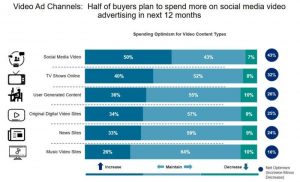If you work in marketing or digital operations, the call to action (CTA) is something of a rock star. We test it. We revere it. We understand that a small lift in click-throughs for it can mean significant gains for the business.

And yet a quick Google search for CTA will pull up results for the Chicago Transit Authority, the California Teacher’s Association, the Cherenkov Telescope Array, and a slew of other results, while our little rock star—the call to action—is nowhere to be found on page 1.
The reality of the call to action is that while there’s now more attention paid to it compared to, say, 10 years ago, we could still be thinking about it and optimizing it quite a bit more.
Below are four tips to help you go beyond just testing your CTA button color:
1. Contrast
The first lever that you can turn when testing versions of your CTA is contrast. Note that we’re not specifically talking about colors. Colors are absolutely a factor, but even if red tests better than green, that doesn’t mean red converts better in a general sense. Red may have more contrast against the colors used in your theme.
It’s important to have mostly a color-neutral presentation—benign and boring works quite well for most sites, and you’ll have more leeway to make the CTA more distinctive when using a “bland” page.
2. Choices
The second lever almost does not need to get mentioned: for your CTAs to be found, you need to limit choices. Limit the potential actions of your visitors. One is ideal, and two potential actions can be forgiven if you absolutely need the second choice.
Any more than that and you’re just confusing your visitor. Remember: if you prioritize everything, you prioritize nothing.
3. Affordance
Contrast and choices (or the lack thereof) will help visitors spot buttons. Visual affordance tells visitors what they can do with those buttons.
For the latter, you have several options available:
- Shape: rounded objects call a little more attention and convey a little more interactivity
- Size: greater sizes typically help give buttons more attention and hierarchical “weight”
- Position: negative space around buttons help visitors understand that the area can be interacted with
For your CTAs to work, two things need to happen. First, visitors need to be able to spot them without any effort. Second, visitors must instantly know what they do—affordance, limited choices, and contrast are required, but they are the bare minimum. You need more.
4. Intent
Don’t underestimate the importance of matching intent. This sounds complicated (and it often is) but there are simple things you can start with. At a bare essentials level, that means making sure your calls to action are indeed actions. For instance, there’s a difference between “Free Trial” to “Try it Free.”
You might be surprised at the difference in click-through rates between the passive versus the more action-oriented one.
If you want to dive deeper, you can go through the usual tools you have for crafting emotional messaging. In an example case for the Clinton Bush Haiti Fund, just changing the form CTA from “Submit” to “Support Haiti” increased dollars donated per visitor by 15.75%.
Yes, emotions matter a lot in conversion.
Making it Count
Optimizing web sites often call for tests on the CTAs, and that’s absolutely required. But once you know that you need to test, and once you actually have the tools required to test, there’s still the matter of knowing exactly which levers you are turning for your tests.
With contrast, choices, affordance, and intent, you have a complete set of tools to test to make your CTA count.
The Multichannel Email Marketer
Explore different ways to benefit from email campaigns that work in unison with other areas of the organization, connecting two crucial elements that have always been treated separately within organizations—knowledge about the customer and marketing actions to deliver a better experience. Download “The Multichannel Email Marketer.”
Read more on Business 2 Community
(389)





